Search
Search Results
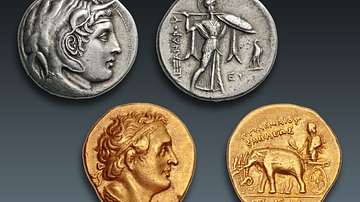
Image
Elephant Symbolism on the Coins of Ptolemy I
Two coins issued by Ptolemy I: 1) A portrait of the deified Alexander the Great wearing an elephant scalp on his head, with a ram’s horn over his temple, and an aegis (sacred fleece) over his shoulder; on the reverse Athena Alcidemus, the...
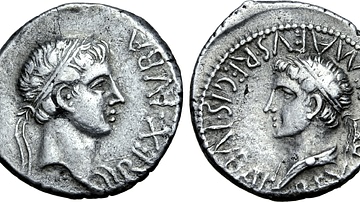
Image
Juba II & Ptolemy of Mauretania
Coin from the co-regency of Juba II (r. 29 BCE - 23 CE) and Ptolemy of Mauretania (c. 10 BCE - c. 40 CE). Left; Juba II, Right; Ptolemy of Mauretania. Silver Denarius, minted c. 20-24 CE. Minted in Caesarea, Mauretania (near modern day...

Image
Ptolemy VI Making Offerings to the Gods, Kom Ombo
A relief from the temple at Kom Ombo in Egypt depicting Ptolemy VI Philometor (r. 180-145 BCE) making offerings to the gods. Ptolemy can be seen at the far right, holding offerings.
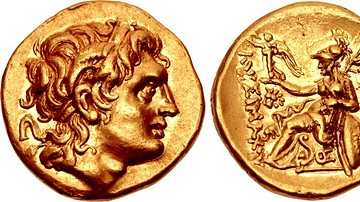
Image
Stater of Ptolemy Keraunos
A gold stater minted by King Ptolemy Keraunos of Macedon (r. 281 - 279 BCE). The coin was minted c. 280 - 279 BCE in Lysimachia, Thrace. It is a rare minting from Ptolemy Keraunos' brief reign as King of Macedon, and even briefer period of...
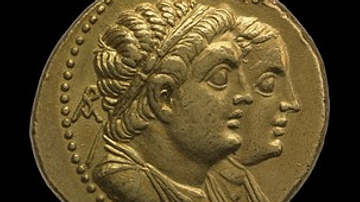
Image
Gold Octadrachm of Ptolemy II & Arsinoe II
This massive gold coin weighing approximately 27.7-8 grams was known as an octadrachm (equivalent in worth to 8 drachmae). Under the Ptolemies, mints in cities like Alexandria and Ptolemais produced ever larger denominations in gold, silver...

Definition
Hellenistic Warfare
When Alexander the Great died in 323 BCE, he left behind an empire devoid of leadership. Without a named successor or heir, the old commanders simply divided the kingdom among themselves. For the next three decades, they fought a lengthy...

Definition
Eratosthenes
Eratosthenes (l. c. 276-195 BCE) was a Greek astronomer, geographer, mathematician, and poet best known for being the first to calculate the circumference of the earth and its axial tilt. He is also recognized for his mathematical innovation...
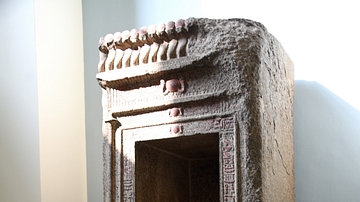
Image
Shrine of Ptolemy VIII & Cleopatra II
Shrine of Ptolemy VIII & Cleopatra II, originally from the Temple of Isis, Philae, found reused in a Coptic church, Ptolemaic Dynasty, reign of Ptolemy VIII, c. 170-116 BCE. The shrine held a cult statue of the goddess Isis, who is mentioned...
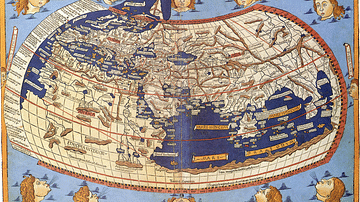
Image
Ptolemy's Map of the World
The map of the world created by the astronomer and geographer Claudius Ptolemy (c. 100 - c. 170 CE). From a 15th-century book by Leinhart Holle. Made by the German cartographer Donnus Nicholas Germanus.
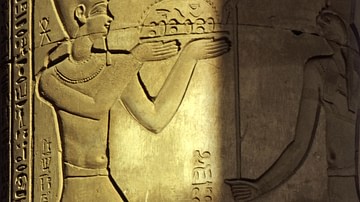
Image
Ptolemy XIII in the Temple at Kom Ombo
A relief of Ptolemy XIII Theos Philopator on one of the pillars in the courtyard of the Temple at Kom Ombo.